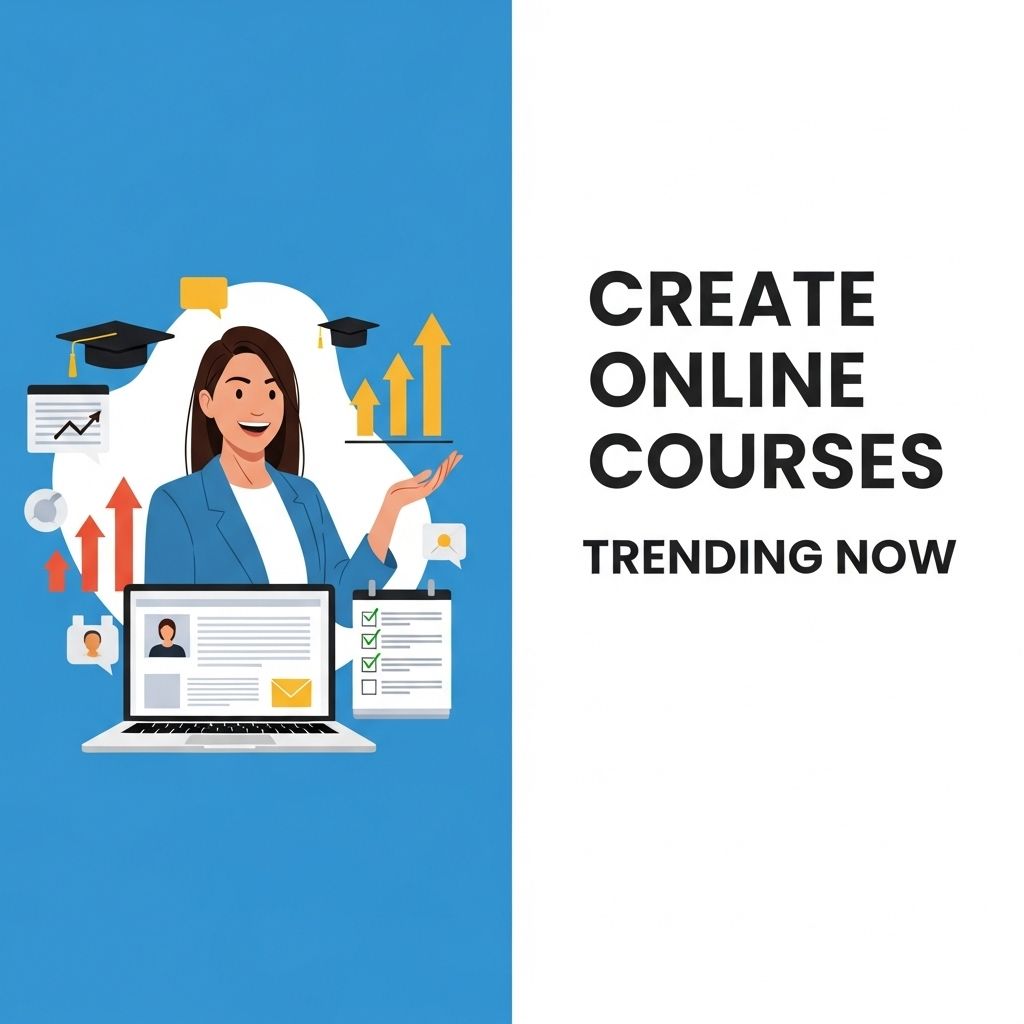In today’s digital age, the opportunity to create a lucrative online course has never been more accessible. Whether you’re an expert in a specific field or have a unique skill set to share, turning your knowledge into an online course can be both rewarding and profitable. This article will walk you through the essential steps to design, launch, and market your online course effectively.
Identifying Your Niche
The first step in creating a successful online course is identifying your niche. A well-defined niche not only helps you target your audience but also differentiates your course from others in the market.
Steps to Identify Your Niche
- Assess Your Expertise: List down the skills or knowledge areas you excel in, which others may find valuable.
- Research Market Demand: Use tools like Google Trends, social media, and forums to identify trending topics.
- Analyze Competitors: Look at existing courses in your potential niche. What can you offer that they don’t?
- Define Your Audience: Who will benefit from your course? Understanding your target audience is crucial for course design.
Designing Your Course Content
Once you’ve identified your niche, the next step is to design the course content. This involves creating an outline and determining the delivery methods.
Creating a Course Outline
A well-structured outline will help ensure that your course flows logically and covers all necessary topics.
| Module | Topic | Delivery Method |
|---|---|---|
| 1 | Introduction to the Subject | Video Lecture |
| 2 | Fundamental Concepts | Textual Material |
| 3 | Advanced Techniques | Live Webinar |
| 4 | Practical Applications | Assignments |
Choosing Delivery Methods
Your course can include various forms of content delivery, such as:
- Video lectures
- Text lessons
- Quizzes and assessments
- Discussion forums
- Live Q&A sessions
Creating Engaging Course Materials
High-quality, engaging course materials are crucial for student retention and satisfaction. Here are some tips to enhance the learning experience:
Using Multimedia
Incorporate different types of media to cater to various learning styles:
- Video: Create engaging video content to explain complex topics.
- Audio: Consider audio lectures for learners who prefer auditory information.
- Visual Aids: Use infographics, charts, and images to illustrate key points.
Interactive Elements
Adding interactive elements can significantly enhance engagement:
- Quizzes to test knowledge
- Assignments for hands-on practice
- Discussion boards for peer interaction
Choosing a Platform to Host Your Course
Your choice of platform can affect the accessibility and usability of your course. There are several options to consider:
Popular Online Course Platforms
- Teachable: User-friendly interface with marketing tools.
- Udemy: Large audience but lower profit margins.
- Thinkific: Great for customizable course design.
- Skillshare: Focus on creative skills, excellent for networking.
Marketing Your Course
Creating your course is only half the battle; effective marketing is crucial to reaching your target audience.
Building an Email List
Start building your email list before launching your course:
- Offer free resources related to your course topic.
- Create a landing page to capture email sign-ups.
- Engage with your subscribers through newsletters and updates.
Utilizing Social Media
Leverage social media platforms to promote your course:
- Share valuable content related to your course topic.
- Engage with followers through live sessions.
- Use targeted ads to reach a wider audience.
Evaluating and Improving Your Course
After launching your course, it’s essential to gather feedback and continuously improve:
Gathering Feedback
Use surveys and interviews to collect student feedback:
- What did they find helpful?
- What areas need improvement?
Making Necessary Adjustments
After analyzing feedback, make necessary adjustments to enhance course quality:
- Update course materials regularly.
- Incorporate student suggestions.
Conclusion
Creating a profitable online course requires careful planning, high-quality content, and effective marketing. By following the steps outlined in this article, you can build a course that not only shares your expertise but also provides real value to your students. With dedication and effort, you can turn your passion into profit while helping others learn and grow.
FAQ
What are the first steps to creating a profitable online course?
Start by identifying your target audience and selecting a niche that you are passionate about. Conduct market research to understand the needs and preferences of your potential students.
How do I structure my online course content?
Organize your course into modules or sections that cover specific topics. Use a mix of videos, quizzes, and written content to enhance engagement and learning.
What platform should I use to host my online course?
Consider using popular course platforms like Teachable, Udemy, or Thinkific, which offer user-friendly features for hosting and marketing your course.
How can I effectively market my online course?
Utilize social media, email marketing, and search engine optimization (SEO) strategies to reach your target audience. Collaborating with influencers in your niche can also help increase visibility.
What pricing strategies work best for online courses?
Research similar courses in your niche to determine competitive pricing. Consider offering discounts or bundling courses to attract more students.
How do I gather feedback to improve my online course?
Encourage students to provide feedback through surveys or reviews after completing the course. Use their insights to make necessary adjustments and enhance the learning experience.




